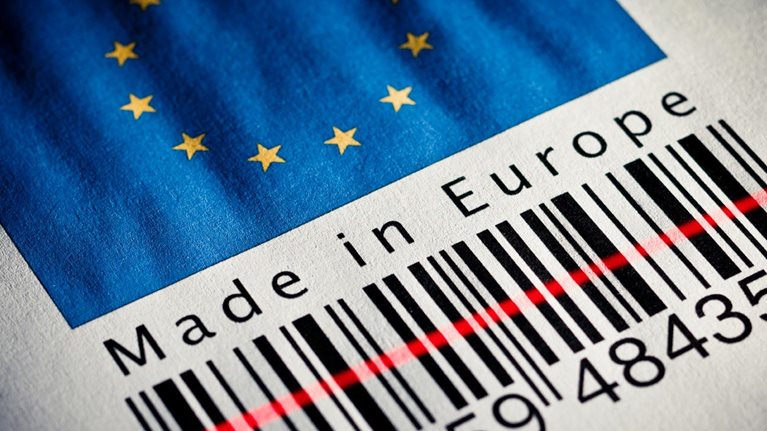Some countries using the euro have current-account surpluses, while others are deeply in deficit. Policymakers need to narrow the gap.
For years, the United States and China drew the most attention from economists and policymakers concerned about growing current-account imbalances. (The current account includes not just imports and exports but also earnings on foreign investments and other transfer payments.) But these two countries make up only half of the global imbalance today.
Much less noticed has been the steady rise in current-account deficits and surpluses among eurozone countries since the adoption of the common currency in 1999. These imbalances have amplified the effect of the global economic and financial crisis in Europe and may dampen the recovery. Unwinding the imbalances over time will be an important, if complex, task for European policymakers.
Although the eurozone's collective current account has seen only modest deficits and surpluses, the sum of the absolute value of its current deficits and surpluses rose at a 16.3 percent annual rate after 2000—more than twice as fast as the 6.7 percent annual pace of increase in the 1990s. To put this in perspective, the US current-account deficit grew by 7 percent per year during this period, while China's surplus grew at a 43 percent annual rate.
Since the creation of the euro, Germany has gone from running a current deficit in the 1990s to a growing surplus. German wages and private consumption have grown little over the past 10 years, while its export sectors have boomed. Germany's current-account surplus reached $235 billion in 2008, equal to 6.4 percent of gross domestic product—as big relative to GDP as the US current-account deficit was at its highest point, in 2006. Austria, Finland, and the Netherlands also had significant surpluses in 2008.
Southern Europe's Needs
Meanwhile, Greece, Italy, Portugal, and Spain have run growing current account deficits since 2000, both with other eurozone countries and with the rest of the world. Spain's overall current-account deficit reached $154 billion in 2008, the largest of any country in the eurozone, and equal to roughly 10 percent of GDP—much bigger proportionally than the US deficit at its peak. Greece and Portugal had even bigger current-account deficits relative to GDP in 2008.
To some extent, these deficits may simply reflect the higher investment needs in the lower-income countries in Southern Europe as they catch up in terms of economic development. But sustaining such imbalances in Europe has real consequences for the economy and the euro, in both the short term and the long term. At the present time these imbalances have amplified the impact of the crisis. Germany's real private consumption has barely grown over the past 10 years, leaving it vulnerable to the drop in exports in 2009. Its GDP fell at a 6.4 percent annual rate in the first half of 2009, one of the steepest declines among major economies.
In deficit countries, foreign capital flows fell sharply in 2008, by some 28 percent in Spain and 30 percent in Portugal, for example, contributing to deep recessions. Today, after the wage and price run-up that occurred in the deficit countries during the boom, their exports are less competitive on world markets than those of other eurozone countries. Prior to the creation of the euro, their currencies would have depreciated during the crisis to give exports a boost. But now these countries can't independently cut interest rates or devalue their currency to stimulate growth. All these factors will make it harder to restart their economies and more difficult to pay down the debts accumulated during the credit bubble.
In the longer term, continued and growing imbalances within the eurozone are undesirable. First, some of the capital inflows in deficit countries prior to the crisis may have funded asset bubbles. Our analysis shows the countries with the most rapid increases in home values also tended to be those that ran current-account deficits. Now these real estate bubbles are bursting, bringing construction to a halt. In Spain, roughly 18 percent of GDP was related to construction prior to the crisis.
Repayment Consequences
In addition, running a continued current-account deficit adds to the national debt, whether it is in the form of government debt (as in Italy) or private debt (as in Spain, Portugal, and Greece). And at some point, these debts must be repaid. Although the use of a common currency removes the risk of a sudden currency depreciation causing the value of foreign debt to soar, the repayment will still represent a transfer of wealth and income out of the country to investors elsewhere.
In the first half of 2009, the imbalances within Europe have begun to decline. Germany's current-account surplus fell by half, or 3 percent of GDP, while Spain's deficit has fallen by 40 percent, to around 6 percent of GDP. To promote sustainable long—term growth, it is important that Europe's policymakers continue to facilitate this adjustment and prevent a resurgence of imbalances, even when demand revives.
This will require surplus countries such as Germany to pursue policies to promote more consumption, in part through reforms in the retail and financial sectors and through measures to increase personal income growth. It will also require adopting policies to promote higher productivity growth in the deficit countries of Southern Europe, which will raise incomes and create more competitive exports.
Rebalancing the eurozone economies would make them healthier in the long run, both individually and collectively, and put them in a stronger position to weather future economic challenges.
Charles Roxburgh is the London—based director of the McKinsey Global Institute (MGI), McKinsey's business and economics research arm. Susan Lund is MGI's director of research, based in Washington D.C.
This article originally ran in Businessweek.


